National Subsidies Ignite Mid-Range Mobile Phone Market: A New Battlefield for Innovation
![]() 04/28 2025
04/28 2025
![]() 591
591
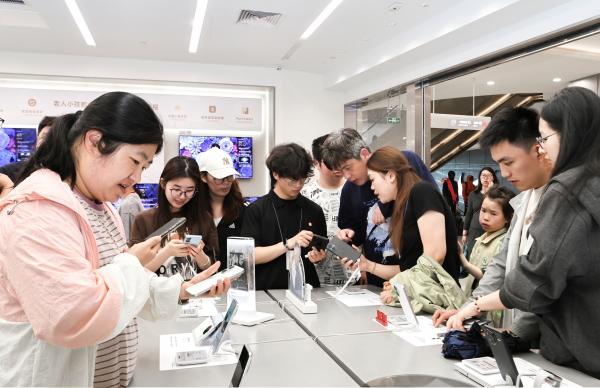
Image source: Xiaomi Home official Weibo
A Battleground of Ecosystem-Centric Competition
By Meng Huiyuan
Edited by Li Wenjie
Typeset by Annalee
While the global spotlight shines on domestic mobile phone brands aiming for the premium segment, a more intense battle is quietly brewing in the mid-range market.
For domestic brands' high-end flagship phones, consumers often struggle to pinpoint a distinct advantage, as the term "flagship" inherently suggests a "jack-of-all-trades" product, excelling in every aspect.
Mid-range products, however, are a different story. They are akin to "specialists," focusing on specific areas rather than pursuing exaggerated benchmark scores or complex technical jargon. From performance selection to pricing, they hinge on manufacturers' deep understanding of segmented user needs (e.g., gaming, photography, long battery life).
In this competitive landscape, Xiaomi's Redmi dominates with extreme cost-effectiveness, OnePlus pioneers new paths through technological optimization, OPPO achieves breakthroughs with differentiated features, Honor consolidates its strengths with offline channels and AI imaging, realme disrupts the market with aggressive pricing and social scene design, and vivo expands its reach with gaming optimization and fast charging technology.
These strategic divisions are accelerating the industry's evolution towards technology popularization and scenario exploration.
Budget Constraints Necessitate Trade-offs in Mid-Range Choices
"Selecting a mid-range phone hinges on your specific needs. Unlike flagship phones, which excel in nearly every aspect but come with a hefty price tag, mid-range phones offer a great alternative for budget-conscious consumers. However, each has its unique selling point, akin to choosing the one feature you value most."
Yang Fan, in need of a new phone, recently visited several domestic mobile phone brand stores. Due to the economic environment, she could only allocate a budget for a mid-range model this time, unlike her previous practice of replacing her phone every one or two years. The sales staff's insights significantly impacted her, as she had previously focused solely on flagship phones.
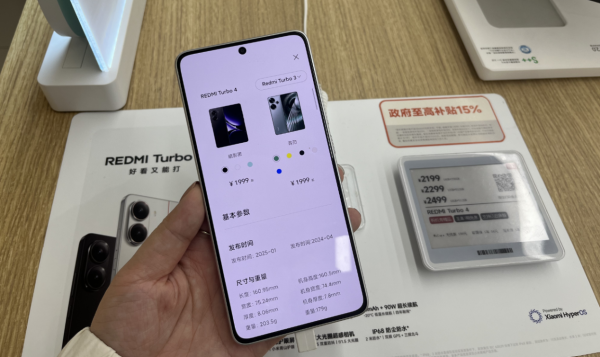
Mid-Range Market Benefits Most from National Subsidy Policy
Every salesperson Yang Fan encountered highlighted the key features of different mid-range models priced between 2000 and 3000 yuan. "When choosing a flagship phone, you focus more on usage habits and brand reputation, as it's the brand's best offering. But mid-range phones follow a different logic, emphasizing a precise match with users' core needs."
From a consumer perspective, with a limited budget, choosing a mid-range model necessitates trade-offs. For brands, mid-range products maximize the utilization of their supply chain and technology transfer. While flagship phones showcase specifications, cost-cutting in mid-range models is a true skill.
Due to cost constraints, mid-range products generally have specific focus points, such as performance or battery life, which drive differentiated competition among brands and products. No single brand can dominate the market with a single advantage.
Online feedback reveals that these mid-range phones indeed have trade-offs: The Redmi Note series boasts the most powerful processor at its price point but has adequate camera and screen quality; OnePlus's "performance tuning" ensures stable game frame rates but often comes with a 10% smaller battery than competitors; OPPO Reno excels in portrait photography and lightweight design but has less gamer-friendly thermal management; Honor's digital series stands out in night photography with AI algorithms but lags in fast charging power...
As phone manufacturers push mid-range strengths to the extreme, consumers' choices become a game of compromise.
"For mid-range phones, it generally depends on the product definition. If it's about long battery life, use a large battery; for outdoor users, enhance water and dust resistance; for gamers, opt for a better chip. However, imaging investment is usually minimal to differentiate from more expensive products," an IDC analyst once noted.
According to IDC, smartphone shipments in the Chinese market increased by 3.3% year-on-year to 71.6 million units in the first quarter of 2025, driven by the "national subsidy" policy and the Spring Festival sales season. While continuing the growth trend of the past five quarters, the growth rate fell short of IDC's expectations.
Notably, the national subsidy doesn't cover all price segments, benefiting the mid-range market the most – always the most fiercely competitive segment in China. Sales staff repeatedly highlighted the ultra-high cost-effectiveness of mid-range phones combined with national subsidies when demonstrating to Yang Fan. An Honor store employee specifically mentioned the cost-effectiveness of purchasing a mid-range phone under the national subsidy and "Nezha 2" subsidy campaign.
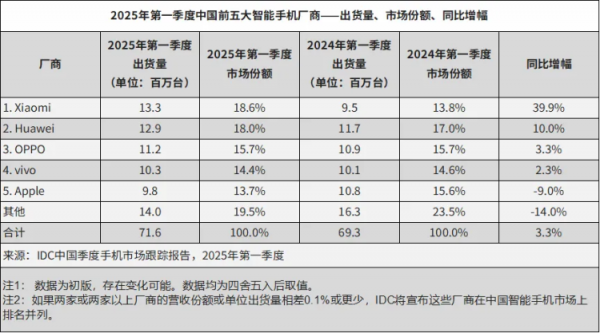
Apple's lackluster performance may stem from its Pro series being excluded from the national subsidy policy. Image source: IDC
In this regard, Ivan Lam, a senior analyst at Counterpoint, predicted in an interview with Huaxia Times that the domestic smartphone market may experience a slight increase in 2025. As the market shifts towards high-end offerings, competition in mid-range and above products will intensify.
When "Strength Competition" Moves Beyond Internal Consumption
The recent flurry of mid-range new product launches by domestic mobile phone brands underscores that competition in this market is far more intense than imagined.
On April 23, realme unveiled its flagship new product, realme GT7, priced from 2599 yuan with a national subsidy starting at 2210 yuan. Positioned to break industry norms in performance and battery life, it aims to be the "double champion" in these areas.
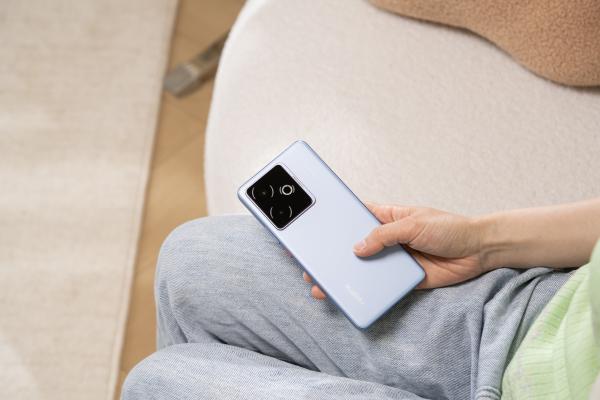
realme GT7
On the same day, Honor launched the gaming performance flagship Honor GT Pro, priced from 3199 yuan after national subsidies. This model caters to young users' relentless pursuit of gaming performance with comprehensively upgraded performance, control, battery life, and eye care experience.
On April 24, OnePlus introduced the small-screen performance flagship OnePlus 13T, priced from 3399 yuan with a national subsidy starting at 2899 yuan. Emphasizing the comprehensive performance experience of small-screen phones, it boasts significant advantages in gaming among similarly sized products, breaking the myth that small screens compromise performance.
Also on April 24, REDMI launched the Turbo 4 Pro, priced from 1999 yuan with a national subsidy starting at 1699.15 yuan. Boasting exceptional battery life, it is REDMI's model with the largest battery capacity ever. Official sales data showed that the Turbo 4 Pro's sales volume surpassed that of the previous generation's first-day sales within just one hour of its launch.
Previously, as mobile phone manufacturers transferred flagship technology to mid-range phones, the mid-range market became a testbed for their technological transformation capabilities.
Observing these developments, it's clear that the intensifying "strength competition" in the mid-range market not only prompts a fundamental shift in the industry's technology transfer paradigm but also spurs the emergence of more groundbreaking products in niche areas.
Taking the gaming-focused Honor GT Pro as an example, in addition to enhancing product performance, it has made significant efforts to build its ecosystem: partnering with the world's leading game platform Garena, making it a "handheld 3A flagship" for gamers; and becoming a special partner of the Hero Asian Championship League (ACL), designated as the official phone for ACL competitions.
Similarly, addressing the market gap for small-screen phones needing flagship-level performance, OnePlus 13T positioned itself as the "small-screen overlord." Targeting this niche market from performance breakthroughs, thermal innovation, and user experience, it set a new record for small-screen phones with a battery life of 7 hours of continuous gaming, demonstrating a qualitative leap in performance.
Developing functions tailored to gaming, imaging, business, and other needs; enhancing product premium capabilities through partner resources (e.g., game developers, event IPs); introducing thermal solutions from the new energy vehicle sector (e.g., VC vapor chambers) into mobile phones... These choices indicate that competition in the mid-range market has shifted from simple cost-effectiveness to differentiated competition based on technological strengths.
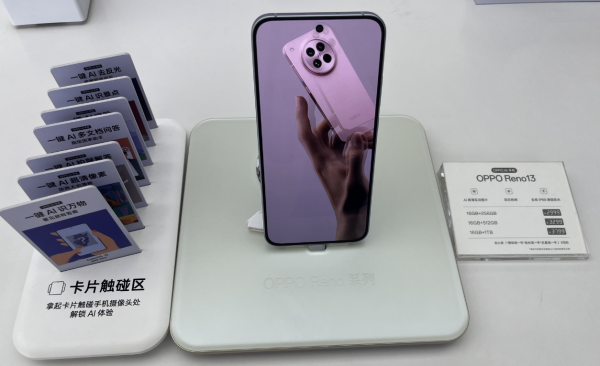
The OPPO Reno series is equipped with AI-related functions
Realizing that the past model of relying on "obsolete flagship technology" in mid-range phones is failing, manufacturers are now conducting in-depth scenario-specific optimizations and even building competitive moats through ecological cooperation.
A new competition for mid-range phones centered on "precise demand fulfillment" has begun. Here, the "competition" is no longer internal consumption but forces the industry to move beyond the single-parameter "strength" war, truly returning to the ultimate competition for users' in-depth usage scenarios.
In the end, the ultimate winners may not just be mobile phone manufacturers but also ecological giants that control core industry chains such as batteries, displays, and AI algorithms.







